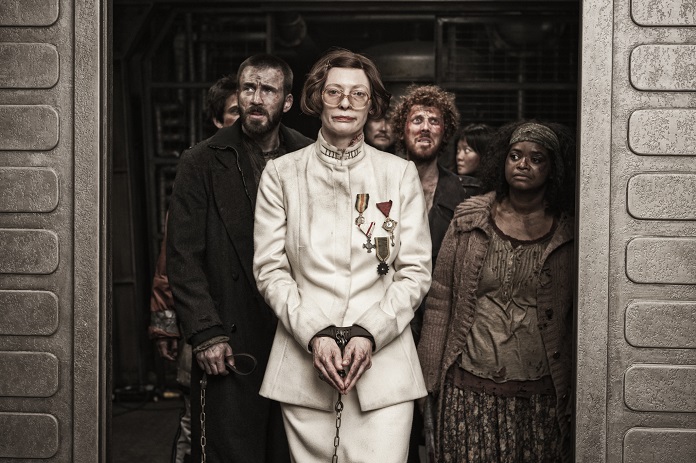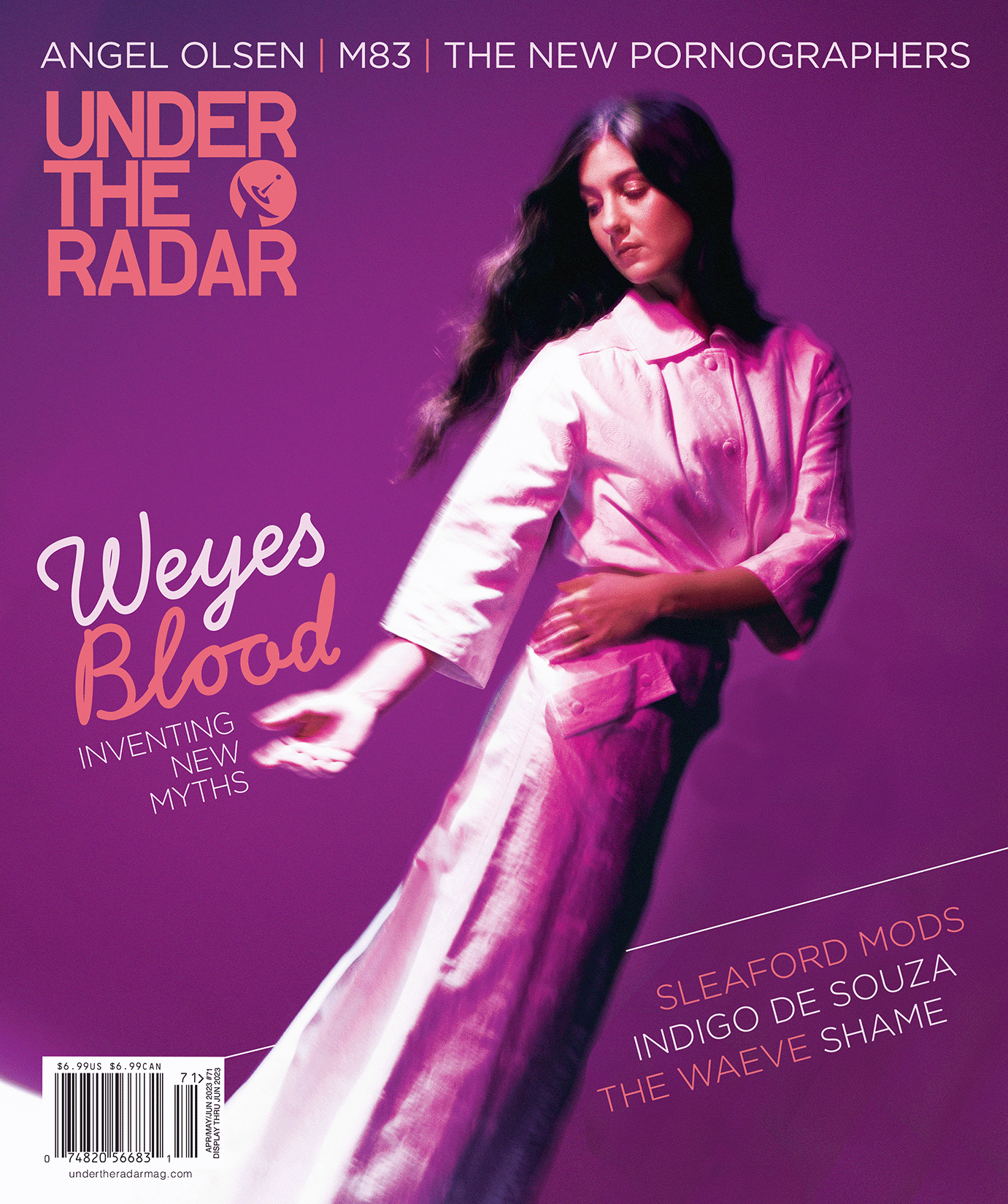
Director Bong Joon-ho on his latest film, Snowpiercer
On Snowpiercer, science fiction, and video game parrallels
Jun 27, 2014
Bong Joon-ho
![]()
Snowpiercer, the English-language debut of South Korean auteur Bong Joon-ho (The Host, Mother), opens in U.S. theaters this week. The film takes place 17 years after a government-sanctioned effort to curtail global warming backfires and leaves the surface of the Earth a lifeless, ice-covered wasteland. The only humans who survived were the ones who sought refuge on the Snowpiercer, an immense train endlessly circling the globe at high speeds.
The train is ruled by a strict caste system, with the wealthy inhabitants in the front cars lording over the poorest riders packed in the tail end. One angry tail-end passenger (Captain America’s Chris Evans) leads a group of rebels in a fight to the front of the train, where they plan to overthrow their leadership, commandeer the engine, and bring equality to the Snowpiercer’s abused lower class. The film also stars John Hurt, Jamie Bell, Tilda Swinton, Octavia Spencer, Ed Harris, Alison Pill, and The Host’s Song Kang-ho and Go Ah-sung.
Bong Joon-ho has delivered one of the most strange and visually-arresting dystopias we’ve seen since Terry Gilliam’s Brazil, and easily one of the most imaginative sci-fi action flicks in years. The filmmaker sat down with us to talk about Snowpiercer’s journey to the screen.
Austin Trunick [Under the Radar]: Snowpiercer was adapted from a French graphic novel. How did you come across your source material in Korea?
Bong Joon-ho: I feel very fortunate to have found the graphic novel, but I also think it was inevitable that I’d find it eventually. I’m a huge graphic novel fan, and I collect them. I know that sooner or later I would have found it. But I’m lucky, in a way, because outside of France it was only published in Korea at the time. Even in France, though, it wasn’t a mainstream, hit comic book. Now with the release of the film, it’s been published in the U.S. and Germany and other territories, but at the time it was just Korea.
There’s a small comic book shop that I go to regularly. I went to the shop one day in 2005, and there it was. I read the whole thing standing there in the shop. By the time I left, I was determined to make it into a film.
You’ve said that one thing which stuck out to you most about this story was the train, and that was the idea that kept bringing to Snowpiercer. What was it about the train setting that was so appealing to you?
Whether it’s a graphic novel or a book, what I find most attractive [about a story] are the things that give me an immediate feeling in my skin. Snowpiercer was that way. The idea of the frozen, clean, white world outside, but then inside you can really smell the people intertwining inside the tail section. There were so many smells and images that came to mind, and I really wanted to express that on film.
As a young boy, I remember hiding in closets. The idea of small spaces, those claustrophobic qualities—I actually enjoy that. The idea of shooting inside a train was like shooting in a submarine, or shooting in a spaceship in outer space. It was similar to that.
While the film is set in the future, the setting has a very modern feel. Within the story, the train was built to withstand an apocalypse that happens very soon—
Next month! [laughs]
Did that allow you to say more about our current society, within the futuristic setting of your film?
It’s really about our lives in the present day. That’s one of the great things about sci-fi, in that it’s a mirror of our current society. On the surface it’s a futuristic sci-fi film with certain types of modern devices, but it’s really about how we live our lives today. That’s why you have aspects of global warming in the story. The movie starts in July 2014, but jumps quickly to 17 years later. But really, it’s still now, because for 17 years society on the train has been maintained the exact same way. The train is a moving time capsule.
What are your favorite science fiction films? Were any an influence on Snowpiercer?
I don’t know if any were a direct influence on this movie, but even before I became a director I was a fan. There are so many movies that I loved. John Carpenter, I love his movies. They Live. The Thing is a masterpiece. Escape From New York. Escape From L.A., that’s also a film I love.
So many others… George Lucas’ THX 1138 is also a favorite movie.
You worked with one of sci-fi cinema’s legendary actors, John Hurt…
Yes, the chest burster! [Laughs] Even on the set, I wanted to ask him so many questions. Like, what was it like working with Ridley? How is he on-set? But of course, I was working and had a job to do, and so I had to resist.
Tilda Swinton is really fantastic in this film.
She’s amazing.
You adapted that role specifically for her. It’s a pretty crazy part. What made you picture her in it?
Originally I’d written the character, Mason, as a middle-aged man. He wasn’t in the original graphic novel. Tilda and I met and we wanted to work together, but I realized there was no actual role she could play. But then I thought about it, and thought, “Oh, Mason. He’s sort of a political snob, and very showy. He sort of preaches to the tail section people.” I thought that Tilda would be great at expressing these ideas. Also, just the idea of gender. She’s transcended gender in other films before, like Orlando.
At the time, Tilda really wanted to transform in the film and appear completely unrecognizable to the audience. The costume designer, the makeup designer and I all traveled to her house, and we played around and tried different ideas and costumes. Even though we created this weird character who wears dentures and prosthetics, the amazing thing was how flexible and expressive she could be under all that costume and makeup.
Which scenes or setpieces were the most challenging to design, once you had the script?
Just from the production design standpoint, the aquarium section was perhaps the hardest because it was all green screen; we were shooting in an empty space. It was all special effects in that scene.
This isn’t really a scene but a whole sequence, but the axe battle that occurs in the middle of the film… it had so many characters, and extras, and stunt people, and there were so many different levels to the fighting itself. That was really challenging. It’s actually like half of the entire train that battle takes place in. And the torch scene—the torch relay—that was all real fire; it wasn’t lit with any electricity at all. From the very beginning, working with the director of photography, that idea was very hard to realize.
You shot in the Czech Republic, and worked with a crew from all over the world. It sounds like the challenge in making your first English-language movie, though, wasn’t communication, but navigating the varying filmmaking systems and sets of rules. What sort of obstacles did you have to work though?
Koreans, Europeans, Americans, yeah. It was a really diverse cast and crew. People from Romania, Iceland, Malaysia. But you know, the mechanism or the process of making films is the same everywhere, so it wasn’t that difficult.
In terms of the U.S. and Europe, unions were the only things that were different than what I’m used to. Things like the Screen Actors Guild; just how long you can shoot, and how much time you need to rest. There are so many rules, especially around shooting with kids. So that was different.
The one thing that actors like John, or the other cast and crew members thought was really interesting, was my on-set editor. That’s actually very common in Korea. But to shoot and edit as you’re going, that was something that was new to a lot of these guys.
The film’s release was held up in the U.S. for a few months while there was some discussion over different cuts. How did it come to be that your final version is the one we’re seeing here?
There wasn’t really any fighting. There was a lot of trial and error and experimentation on the part of The Weinstein Company. There did exist a version that was 20 minutes shorter that was tested with audiences, and the results were somewhat mixed. Then the director’s cut was tested in Los Angeles, and the reaction was a lot better. So, The Weinstein Company ultimately decided to go with the director’s cut, which I’m very thankful for, and respect that decision.
Writers have drawn comparisons between Snowpiercer and video games, in that the hero has an explicit goal—to get to the end of the train—and enemies and obstacles that stand in his way.
Yes. “Stage complete.” [laughs]
Our critic called it “the best video game movie ever made,” even though it’s based off a graphic novel and there is no game. I’m curious what you think about the video game comparisons?
It’d make a great game, but no company has offered to do one. [Laughs] I don’t know why.
The online community in Korea, they also compared it to a video game called BioShock, which I’m unfamiliar with. I wasn’t consciously thinking about games as I was making Snowpiercer, but with games and movies, there’s a thrill about advancing forward. The story of this movie is about going from the back of the train to the front of the train, and there’s always a thrill when you get through one stage. There’s also anticipation about what’s coming next.
Maybe the audience doesn’t feel it, but an important decision I made from the very beginning is that the audience would only see what Chris Evans experiences and sees. It’s not like he’s in the tail section, and we’ll cut to where Tilda Swinton is in the front section. We don’t cut back and forth. We only see as much as Chris sees. That’s very similar to video games, because you only see the stages you’re currently in.
With each train car being so different, it’s almost as if you had to design the visual looks for several movies. Do you have a section that’s your favorite?
It’s maybe not my favorite, per se, but the section that took the longest to conceive and actualize was the engine section. [The frontmost car of the train.] That was a team effort between me, my production designer, and my conceptual artists. It took a long time and a lot of energy to finally realize the engine and the way it looks.
The engine is talked about from the very beginning. Chris Evans says, “If we control the engine, we control the world.” And other people, like Tilda and Alison Pill, they’re always praising the engine. Really, the story is about the adventure to get to this section, and I didn’t want to disappoint the audience. It had to live up to their expectations.
—-
Snowpiercer opens in theaters June 27th. Our review can be read here.
Most Recent
- Premiere: Mia Day Shares New Single “Mountain Song” (News) — Mia Day
- Tallinn Music Week, Tallinn, Estonia, April 3-7, 2024 (Review) — Virta, Musta Huone, Mari Kalkun, Sven Grünberg
- Picnic at Hanging Rock [4K UHD] (Review) —
- Joe Goddard of Hot Chip Announces New Album, Shares Video for New Song “Moments Die” (Feat. Barrie) (News) — Joe Goddard, Hot Chip
- Premiere: O Slow Shares New EP ‘Every Time I Look In The Mirror’ (News) — O Slow


Comments
Submit your comment
December 17th 2017
2:41pm
thanks for the share..